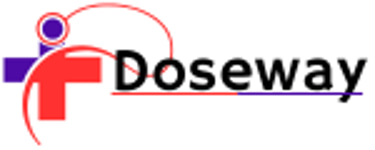FEHB Comparison Tool - (Compare FEHB Plans)
Use our FEHB Plan Comparison Tool to analyze costs, coverage & get a personalized score. Find the best federal health plan for your needs!


FEHB Plan Comparison Tool: A Comprehensive Guide for Federal Employees
Choosing the right Federal Employees Health Benefits (FEHB) plan can be overwhelming. With multiple plan types, coverage options, and cost structures, federal employees need a clear way to compare their choices.
This article introduces our FEHB Plan Comparison Tool, designed to simplify decision-making by calculating key metrics, scoring plan suitability, and providing personalized recommendations. Below, we explain:
Key Terms and Their Importance
Understanding the Calculator’s Results
How the Calculator Works
1. Key Terms and Their Importance
A. Plan Types
FEHB offers several plan structures:
Fee-for-Service (FFS): Flexible but may have higher out-of-pocket costs.
Health Maintenance Organization (HMO): Lower costs but requires using in-network providers.
Preferred Provider Organization (PPO): Balances flexibility and cost with in-network discounts.
High Deductible Health Plan (HDHP): Lower premiums but higher deductibles; often paired with an HSA.
Why It Matters:
Your healthcare needs (e.g., frequent specialist visits, planned surgeries) determine which type works best.
B. Coverage Type
Self Only: Covers just the enrollee.
Self Plus One: Covers the enrollee and one dependent.
Family: Covers the enrollee and all eligible dependents.
Why It Matters:
Family plans cost more but provide broader coverage.
C. Cost Factors
Biweekly Premium: Amount deducted from your paycheck every two weeks.
Annual Deductible: What you pay before insurance covers costs (can be in $ or % of max).
Out-of-Pocket Maximum (OOP Max): The most you’ll pay in a year (after this, insurance covers 100%).
Why It Matters:
A plan with a low premium but high deductible may cost more if you need frequent care.
D. Expected Healthcare Usage
Doctor Visits / Specialist Visits: More visits = higher costs.
Prescription Drug Usage: Impacts pharmacy costs.
Hospital Stay Probability: Major factor in total expenses.
Why It Matters:
If you expect high medical usage, a higher-premium plan with lower deductibles/OOP max may save money.
2. Understanding the Calculator’s Results
After entering your details, the tool provides:
A. Plan Cost Summary
Estimated Annual Cost: Premiums + expected out-of-pocket expenses.
Monthly Equivalent: Helps budget planning.
Potential Savings: Compares your plan’s cost to an average FEHB plan.
B. Plan Score (0-100)
90-100 (Excellent): Ideal for your needs.
75-89 (Good): Solid choice with minor trade-offs.
60-74 (Fair): Adequate but not optimal.
Below 60 (Poor): Likely a bad fit.
C. Detailed Breakdown
Visualizes how different factors (premiums, deductibles, coverage) contribute to your score.
D. Recommendations
Personalized advice, such as:
"Consider a PPO if you need specialist flexibility."
"Verify if your preferred hospitals are in-network."
3. How the Calculator Works
Step 1: Enter Your Information
Personal Details: Age, gender (optional), ZIP code (for regional plan variations).
Plan Details: Select your plan type and coverage level.
Cost Inputs: Enter premiums, deductible, and OOP max (in dollars or percentages).
Expected Usage: Estimate doctor visits, prescriptions, and hospital likelihood.
Step 2: Calculation Process
The tool:
Converts percentages (e.g., a 10% deductible becomes a dollar value).
Estimates annual costs based on premiums + expected out-of-pocket expenses.
Scores the plan by comparing costs, coverage, and your healthcare needs.
Step 3: Results & Recommendations
Cost Comparison: Shows how your plan stacks up against averages.
Visual Score: A quick glance at plan suitability.
Actionable Tips: Ways to optimize your coverage.
Conclusion
Our FEHB Plan Comparison Tool takes the guesswork out of selecting a health plan. By analyzing costs, coverage, and your expected medical needs, it provides:
✅ Personalized scoring (0-100)
✅ Cost projections (annual & monthly)
✅ Tailored recommendations
Next Steps:
Use the calculator below to evaluate your FEHB options.
Compare multiple plans to find the best fit.
Adjust inputs to see how different scenarios affect costs.
Have questions? Drop them in the comments—we’re happy to help!
Try the FEHB Plan Comparison Tool Now
By understanding these key factors, you can confidently choose an FEHB plan that balances cost and coverage for your unique situation. 🚀
Check Our Free Tool:
Explore our extensive range of health calculators.
For Appointments
Get Health insights & OFFERS
support@doseway.com
0318 - 6144650
© 2025. All rights reserved.
